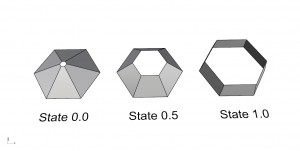Assignment 08
DESCRIPTION
Toolpath your surfaces from Assignment 07 in RhinoCAM. Follow the videos provided below and use the Rhino template and CSV tool set file provided on the Course Files page. You will be expected to perform a comparative toolpath study for the finish toolpath using a matrix of 3 tool types (3/8″, 1/4″, and 1/8″ ball) and 3 stepover settings (75%, 50%, and 25% of the tool diameter).
REQUIREMENTS
Come to class on May 1st with your RhinoCAM file completed through the roughing and finish toolpaths and a completed toolpath study performed using the InDesign template provided on the Course Files page.
SAMPLE TOOLPATH STUDY
RhinoCAM Basic 3 Axis CNC Toolpathing Strategy





